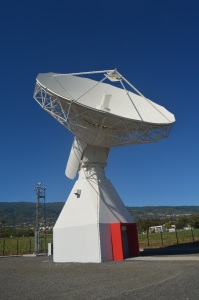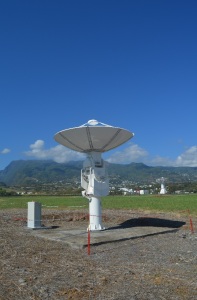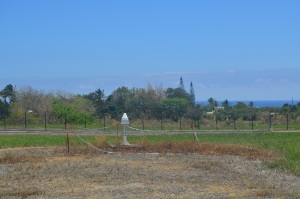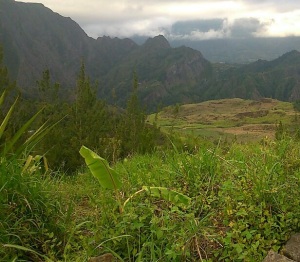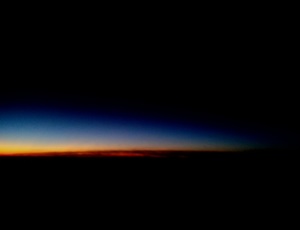@GalileoGNSS is travelling to some of the Galileo remote sites and is enjoying a lot! The pictures of the site in this post correspond to an island located in the Indian Ocean.
This is a TT&C station (Telemetry Tracking and Control). It is used to communicate with each satellite on a scheme combining regular, scheduled contacts, long-term test campaigns and contingency contacts. It is a 13-meter antenna operating in the 2 GHz Space Operations frequency bands. During normal operations, spread-spectrum modulation will be used, to provide robust, interference free operation. However, when the navigation system of a satellite is not in operation (during launch and early orbit operations or during a contingency) use of the common standard TTC modulation will allow non-ESA TTC stations to be used. In the final FOC phase there will be five TTC site (In IOV phase there were two sites deployed).
This is the ULS (Up-Link Station). The GMS communicates with the Galileo satellites through a global network of ULS, installed at five sites. It is a 3.5-meter C-band antenna, that is, it operates in the 5 GHz Radionavigation Satellite (Earth-to-space) band. Currently in IOV phase there are five sites deployed with 2 of these antennas per site. In the future FOC phase it is foreseen to have in total nine sites with four ULS per site.
This is the Galileo Sensor Station (GSS). The network of GSS it is used to monitor the navigation signals of all satellites on a continuous basis. More precesily, they are used for Orbitography Determination and Time Synchronisation (OD&TS) function and for the Integrity Processing function (IPF). In IOV phase there are 12 sites deployed.
The landscape was wonderful.
Also the views from the plane 🙂

